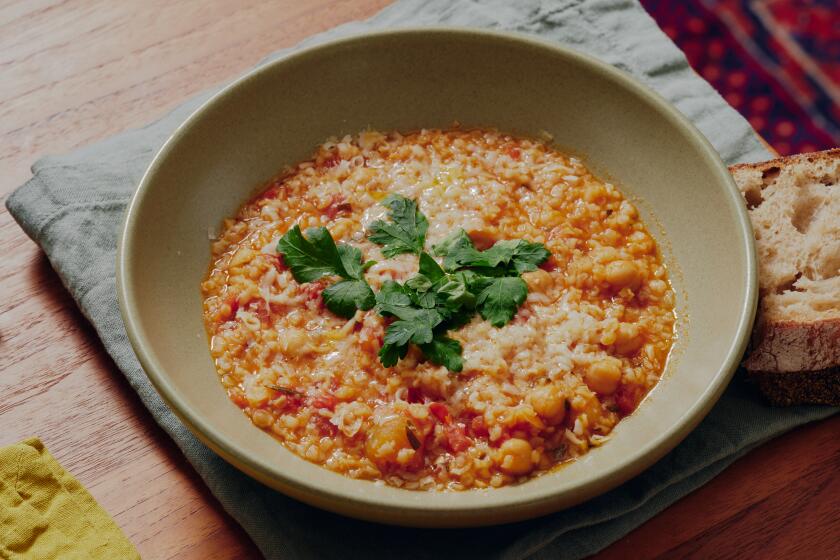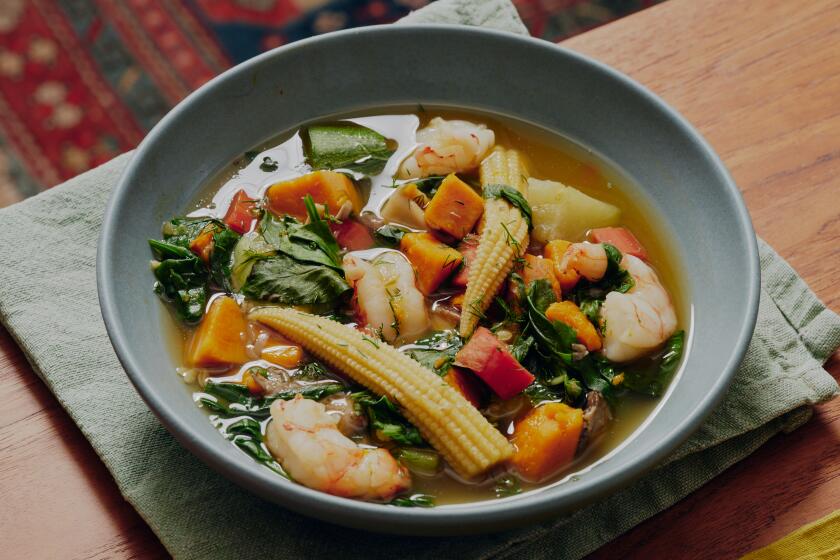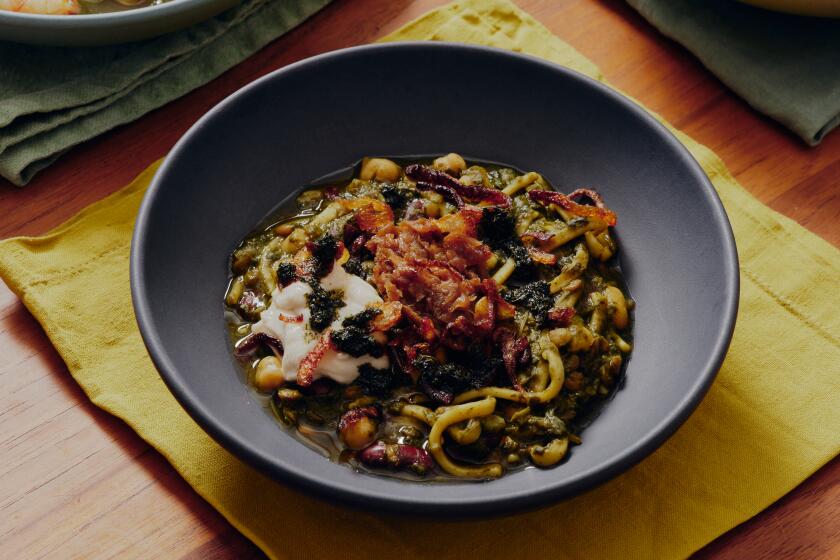Thick and creamy Boston clam chowder

As I tour New England teaching cooking classes, no single subject prompts more questions and stirs more heated debate than chowder.
“What makes a chowder a chowder and not a soup or stew?”
“Are chowders always made with seafood?”
And (adamantly stated), “We never, ever [insert “thicken with flour” or “add tomatoes” or “use bacon”] around here.”
These questions and opinions come at me over and over, from New Haven, Conn., to Providence, R.I., to Marblehead, Mass., and even from folks in landlocked Concord, N.H., and Shelburne, Vt.
“Chowder,” states Alan Davidson in “The Oxford Companion To Food,” “always means a hearty soup, usually but not invariably of seafood; and clam chowder is its best known form.”
That definition is a little too vague for me. And it certainly won’t lift me off the proverbial hook when I am being grilled by rabid chowderheads like the ones I’ve encountered of late.
Here’s my definition of chowder: A chunky hearty soup, usually made with salt pork or bacon, onions, potatoes, the main ingredient (almost always seafood) and a liquid. That’s the starting point, and then people add or subtract, depending mostly on the region.
The word “chowder” derives from chaudiere, French for caldron. Chowders have been eaten in this country for at least two centuries, probably three.
They have evolved over the centuries, but the soup actually remains pretty true to its culinary beginnings. Although chowders traveled west as the country expanded, it was in New England that they flourished most and where regional differences are still most distinct.
Debate still rages, for instance, about whether tomatoes belong in a chowder. A good many cookbooks give recipes for “Rhode Island Red” chowders. From as far back as the 1939 edition of the “Fannie Farmer Boston Cooking-School Cook Book” to the brand-new Jasper White book, “50 Chowders” (Scribner, $30), most of the tomato recipes are traditional milk-based chowders with some chopped canned or fresh tomatoes added.
Many chowder aficionados, however, don’t agree. And they don’t mince words.
“I love Jasper White, but he’s crazy if he thinks we eat chowder with tomatoes in it here in Rhode Island,” said a middle-aged woman from Warwick. “Where I grew up, we never, never made it that way. My grandparents made chowder all the time--at least once a week--and they’d tell him a thing or two if they were still around!”
When I was invited to teach a cooking class in Providence, I chose to demonstrate several chowders from my book, suspecting that the subject would provoke lively conversation, making for an entertaining and enlightening evening.
I got a little more than I bargained for. When I introduced my version of the Rhode Island Red chowder, any lingering shred of Yankee reserve dissolved, with people declaring for or against the controversial tomato with vehemence that sometimes bordered on genuine indignation. In a class of about 15, the majority were decidedly against the item in question, with only a handful admitting to having grown up eating chowder with tomatoes in it.
We tried tying the chowder styles to a particular part of Rhode Island, but it seemed that the differences existed from family to family, or possibly from town to town. And in spite of our increasingly urban, mall-dominated, fast-food-oriented society, these traditions seem to have remained more or less intact.
The funny thing was that they all loved eating the red chowder. It is a delicious variation, with the slight acidity of the tomatoes cutting the richness and enlivening the brew. (You’ll note that my recipe lists a pinch of baking soda, a precaution against the tomatoes curdling the milky broth.)
There are plenty of other variables in even the most basic clam chowders. The type of clams used, the choice of liquid, whether to thicken with flour and the use of salt pork or bacon are all rife with potential controversy.
The type of clam is usually easily decided. Use whatever clams are harvested in a particular place.
In Maine, chowder is almost always made with soft-shell clams, or “steamers,” because hard-shell clams (also called quahogs--that’s pronounced “ko-hogs”) are rare in the state. Maine chowder is usually a milky, brothy chowder, not thickened with flour.
The traditional Boston-style clam chowder is made with chopped quahogs, has a milk or cream base and is usually thickened with flour.
In Connecticut and some parts of western Rhode Island, the traditional chowder used to be a “clear” one (that’s pronounced “clee-ah” in Yankee), made with little or no milk, using clam broth and water as the liquid.
And finally, there’s the perennial argument about Manhattan Clam Chowder, which James Beard described as resembling “a vegetable soup that accidentally had some clams dumped into it.”
In a large kettle or soup pot, cook salt pork over medium heat until fat is rendered and pork bits are crispy, about 10 minutes. Remove pork with a slotted spoon to drain on paper towels and reserve, leaving drippings in pot.
Add onion to drippings and cook, stirring frequently, until it begins to soften, about 6 minutes. Sprinkle on flour and cook, stirring, 2 minutes. Add milk and clam liquor, whisking until smooth. Add potatoes, bay leaf and dried thyme and cook uncovered until potatoes are almost tender, 10 minutes. Add clams and fresh thyme (if using) and stir in half-and-half. Continue to simmer until potatoes are tender, about 5 more minutes. Season with salt and pepper to taste. (Remove from the heat and let chowder sit, partly covered, at cool room temperature for at least 1 hour, or refrigerate for up to 2 days. Reheat gently, discarding the bay leaf.)
To serve, ladle chowder into soup bowls, add a small square of butter and stir to swirl in. Sprinkle with reserved salt pork cracklings if desired.
Get our Cooking newsletter.
Your roundup of inspiring recipes and kitchen tricks.
You may occasionally receive promotional content from the Los Angeles Times.














